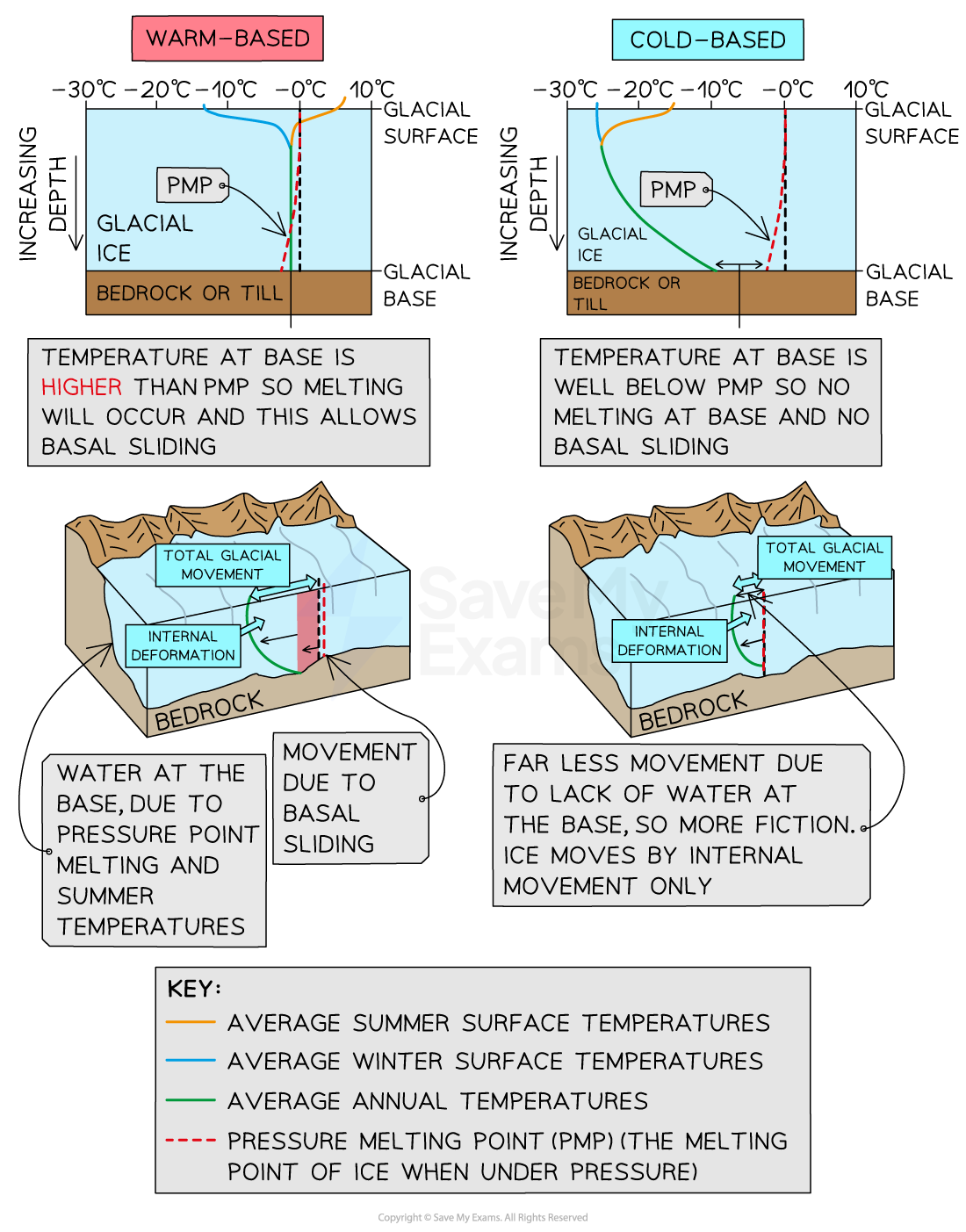Glacial Budgets
- Glaciers are open systems with direct inputs of snow and ice from precipitation, blown in on the wind or with avalanches
- Snow and ice settle and compact to form firn or névé
- Each subsequent snowfall adds to these layers, and further compacts the firn into glacial ice
- Compaction squeezes air out of the firn, and the resulting glacial ice absorbs longwave light but scatters short-waved blue light, making the ice appear blue
- The formation of glacial ice takes approximately 30 years
- These inputs are known as accumulations
- The accumulation is transferred downhill by gravity
- The accumulation loses mass through melting and evaporation called ablation, which is the output of the system
- The balance between the accumulation and ablation over a year is called the glacial budget
- It determines if the mass of the glacier has increased or decreased
- There are two zones:
- Accumulation zone
- Found in the upper part of the glacier
- Inputs are usually more than the outputs
- There is a net gain of ice during the year
- Glacier front advances
- Ablation zone
- Found in the lower part of a glacier
- Output exceeds inputs
- Net loss of ice during the year
- Glacier front retreats
- Accumulation zone
- Where gains and losses balance on the glacier, the area is called the equilibrium line or point
- Over time, variations in the glacial budget will move the line up or down the glacier
- Linked to the advance and retreat of the glacier front
Mass balance
- More accumulation over a year and the glacier has a positive regime or positive mass balance
- The glacier will gain mass and advance in response to high accumulation in the upper zone
- A negative mass balance or regime is when there is less accumulation than ablation (usually during the summer months)
- The glacier will lose mass and retreat in response to low accumulation in the upper zone
- Dynamic equilibrium is when the overall amount of ablation and accumulation balances over a year
- The glacier remains the same size and the position of the glacier front does not change

Glacial budget showing the zones of ablation and accumulation. If the average annual mass balance remains the same, despite short-term seasonal variations, then the system is in dynamic equilibrium, however, balance can move over time


